#conjure
Text

Naomi Native depicted as Oshun, Yoruba goddess of love, beauty, and fertility
Created by A.J. Hamilton
#beautiful black people#black mermaid#beautiful black woman#black woman#oshun#goddess#Yoruba goddess#goddess of love#sweet water#Naomi native#witches of color#black witch#afro witch#hoodoo#african american witch#voodoo#rootwork#pagans of color#bruja#conjure#santeria#witchcraft#sirens#mythical creatures#witches of tumblr#digital art#feminist art#fat black women#fat is beautiful#thicc goth
14K notes
·
View notes
Text
There's levels to ancestral connection, and you shouldn't skip any of them.
Take this as your reminder to first of all, spend time with your spirits, without expecting anything in return. Heavy on that last part. You don't make and maintain a genuine connection with someone just by showing up to their doorstep every time you need something from them. Treat them as people because they are. Your people. You should care for them as much as they care for you.
Be it ancestors (specifically direct blood lineage or adoptive family, any deceased human relative) or ancestral spirits (in general, that is, all ancestral allies and hereditary connections not just your ancestors). Just make time to hang out. Walk up to their space, a cup of your favorite drink in hand, give them their preferred drink and just chat. Don't ask anything in return. If you have an altar for them, do that. But it can be just going to visit their graves and giving libations and flowers, and telling them how your life's going, sharing memories together, remembrance, or just to listen. It can also be going to the beach or a river, and same thing, pour a drink and talk to them, and listen back. It can be your plant allies, while you're watering them, or putting eggshells or honey or sugar water or other good nutrients and fertilizers on their soil. It can be visiting your ancestors in dreams, and spending time with them there. There's so many ways to do this.
The second level to this is letting them sit in your body too. Listen. Become familiar with how they make you feel. With the signs of their arrival and presence. With the signs they communicate with and what they mean to you. With how they let you know they have a message, or that they're in for a visit. And let them in. Dance to your grandma's favorite beats. Sing your grandpa's favorite songs. Make a family recipe and share a meal with them, enjoy it for them and with them.
Ancestral reverence isn't just the big rituals and they're not the most important aspect of it, it is the everyday coexistence, in your little but constant everyday ways.
Do as you do but also as they did. You're an extension of them and they're an extension of you. They not only walk with you, you carry them within you.
Honor that.
#there's more and I may expand on it later#but this is it for now#hoodoo#ancestral reverence#ancestor worship#brujería#curanderismo#conjure#black conjure#brujeria
681 notes
·
View notes
Text

🌙🦋hoodoo inspired witchy moodboard✨🔮
#hoodoo#witchblr#rootwork#conjure#afro witch#black witch#bruja#moodboard#my edit#witchblr moodboard#love magic#love witch
350 notes
·
View notes
Text
Hoodoo is CLOSED to non black AMERICANS
Hoodoo is distinct in that it involves working with specific ancestral spirits and deities, many of whom remain unfamiliar to the broader spiritual community. This sacred connection extends beyond mere knowledge; it is an intimate relationship with spirits deeply ingrained in the Hoodoo pantheon. These spiritual entities are closely tied to the experiences of Black Americans, and understanding them requires a profound awareness of one's lineage.
:
Hoodoo is considered a closed practice, meaning that access to its teachings is earned through guidance and mentorship. True practitioners are taught; they don't self-proclaim. Unfortunately, there is a concerning trend of non-Black individuals claiming to practice Hoodoo without a genuine understanding of its essence. Many cannot name a single spirit from the Hoodoo pantheon, exposing a significant gap in their knowledge.
It's crucial to distinguish Hoodoo from general folk magick practices. Hoodoo demands practitioners to delve into their lineage, understand their history, and grow in spiritual wisdom. The conflation of Hoodoo with generic folk magick demonstrates a lack of comprehension about the unique cultural and historical underpinnings that define Hoodoo. Hoodoo requires knowledge of the American slave trade and its affects on black Americans
Ancestral spirits within Hoodoo are discerning entities, recognizing color and lineage. Contrary to the notion that spirits lack prejudice, Hoodoo practitioners assert that ancestral spirits work closely with their descendants. Given the historical context of slavery and oppression, it becomes inconceivable for these spirits to collaborate with those from the very lineage responsible for their suffering.
:
Unlike some other African Traditional Religions (ATRs), Hoodoo has resisted commercialization and exploitation. Its practitioners emphasize the sanctity of their belief system, urging others to respect and protect it. The appropriation of Hoodoo by those outside its cultural lineage is viewed as a disservice to its profound spiritual significance.
:
Hoodoo is not merely a set of rituals; it is a sacred tapestry woven with the threads of Black American history, spirituality, and resilience. The claim that anyone, irrespective of background, can practice Hoodoo disregards its closed nature and the imperative to honor its cultural specificity. It is time to acknowledge and respect the boundaries of Hoodoo, safeguarding its authenticity and the spiritual legacy it represents.
182 notes
·
View notes
Text
On September 10th we venerate Elevated Ancestor, Voodoo Queen of Louisiana, & Saint, Marie Catherine Laveau on her 222nd birthday 🎉
[for our Hoodoos of the Vodou Pantheon]

Marie Catherine Laveau was a dedicated Hoodoo, healer, herbalist, & midwife who, "traveled the streets [of New Orleans] like she owned them", as the most infamous Voodoo Queen of New Orleans.
Marie C. Laveau I was born a "Free Mulatto" in today's French Quarter in what was then, New France); to a mother & grandmother who were both born into slavery & later freed via freedom papers. It is believed that she grew up in the St. Ann Street cottage of her maternal grandmother.
She married Jacques Santiago-Paris, a "Quadroon" "Free Man of Color", who fled as a refugee from Saint-Domingue, Haiti from the Haitian Revolution in the former French colony . After his passing, she became known as "The Widow Paris". She then worked as a hairdresser catering to White families & later entered a domestic partnership with a French nobleman his death. She excelled at obtaining inside information on her wealthy patrons by instilling fear in their servants whom she either paid or cured of mysterious ailments. Although she never abandoned her Catholic roots, she became increasingly interested in her mother’s African traditional beliefs. The Widow Paris learned her craft from a ‘Voodoo doctor’ known variously as Doctor John or John Bayou.
Marie C. Laveau I is said to have intiated into Voodoo career sometime in the 1820s. She's believed to be descended from a long line of Voodoo Priestesses, all bearing her same name. She was also a lifelong devout Catholic. It didn’t take long before Marie C. Laveau I dominated New Orleans Voodoo culture & society before claiming title of Queen. She was the 3rd Voodoo Queen of NOLA - after Queen Sanité Dédé & Queen Marie Salopé. During her decades tenure, she was the premier beacon of hope and service to customers seeking private consultations - to aid in matters such as family disputes, health, finances, etc, created/sold gris gris, perforemed exorcisms. While her daughter Marie II was known for her more theatrical displays of public events, Marie C. Laveau I was less flamboyant in her persona. She conducted her work in 3 primary locations throughout the city: her home on St. Ann Street, Congo Square, & at Lake Pontchartrain. Despite one account of a challenge to her authority in 1850, Marie C. Laveau I maintained her leadership & influence.
The Queen died peacefully in her sleep in her ole cottage home on St. Ann Street. Her funeral was conducted according to the rite of the Catholic Church & in the absence of any Voodoo rites. To her Voodoo followers, she's venerated as a Folk Saint. In² addition to her Priesthood in Voodoo and title of Queen, she is also remembered for her community activism; visiting prisoners, providing lessons to women of the community, & doing ritual work for those in need.
She is generally believed to have been buried in plot 347, the Glapion family crypt in Saint Louis Cemetery No. 1, New Orleans. As of March 1st, 2015, there is no longer public access to St. Louis Cemetery No. 1. Entry with a tour guide is required due to continued vandalism & tomb raiding.
We pour libations & give her💐 today as we celebrate her for her love for & service to the people, through poverty, misfortune, bondage, & beyond.
Offering suggestions: flowers + libations at her grave, catholic hymns, holy water, gold rings/bracelets, money
‼️Note: offering suggestions are just that & strictly for veneration purposes only. Never attempt to conjure up any spirit or entity without proper divination/Mediumship counsel.‼️
#hoodoo#hoodoos#atr#atrs#the hoodoo calendar#conjure#rootwork#rootworkers#ancestor veneration#Marie c Laveau#Voodoo#Voodoo Queens#new orleans#new orleans Voodoo#Vodou Pantheon#Haitian Voodou
356 notes
·
View notes
Text
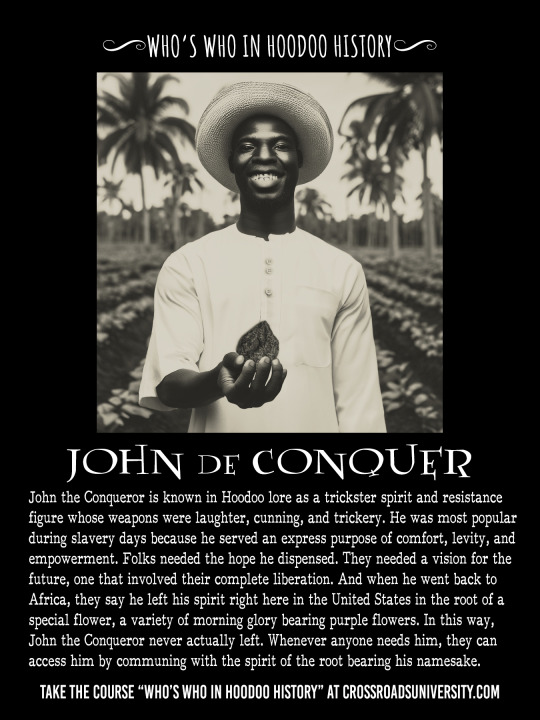
Who's Who in Hoodoo History: High John the Conqueror
John the Conqueror is known in Hoodoo folklore as a trickster spirit, always making a way out of no way at all, “hitting a straight lick with a crooked stick. Winning the jackpot with no other stake than a laugh” (Hurston 1943, 452). Slaves saw him as emerging from a whisper, finding laughter in sorrow, irony in tragedy, and triumph in despair. He was the bringer of hope, “the source and soul of our laughter and song.” He provided much-needed comedic relief in everyday life. He was a resistance figure whose weapons were laughter, cunning, and trickery.
They say that John was a prince who came from Africa, walking on the winds that filled the sails of ships through the Middle Passage. There are no photographs or drawings of the actual John the Conqueror. However, some say he resembled big John Henry, the “steel-driving man” of African American folklore. Or maybe he was “a little, hammered down, low-built man like the Devil’s doll-baby” (Hurston 1943, 452). Some say you can’t draw a spirit, so quit trying. Others say no one ever talked about what he looked like because it wasn’t necessary. White people never knew of his existence, which was by design; they weren’t supposed to know about him. He was the slaves’ biggest advocate on the downlow, and they lived for the tales of his putting one over on ole Massa.
They say that the spirit of John the Conqueror was around in the form of Brer Rabbit before John came on the scene. That wily mammal had already made the rounds on the plantations for a year and a day by the time John came along. Because he was in the form of an entertaining bunny, his tales spread far and wide. In reality, Brer Rabbit and John the Conqueror are two different spirits, but their functions are similar. Both are tricksters; both gain the edge through cunning, audacity, and intelligence. Both are empowering resistance figures.
John the Conqueror’s renown comes from the abundance of folktales describing his exploits. The most significant tales involve his role in procuring freedom through comedic relief and trickery. Freedom was of primary concern to John, and it governed near about all of his decisions. But he wasn’t the same kind of resistance figure as San Malo, Bras Coupe, or Annie Christmas. He was good at playing dumb when he needed to, and he excelled at the art of gaslighting. He played ole Massa like a fiddle.
He could make you think yellow was green and green was yellow. He would make you believe that what he did was your doing, and he was a master at leaving ole Massa standing in his place, mouth agape. He was just that cunning.
John the Conqueror was most popular during slavery days because he served an express purpose. People needed the kind of resilience and inspiration he could bring. They needed the hope he dispensed. They needed a vision for the future, one that involved their complete liberation. And when he went back to Africa, they say he left his spirit right here in the United States in the root of a special flower, a variety of morning glory bearing purple flowers. In this way, John the Conqueror never actually left. Whenever anyone needs him, they can access him by communing with the root bearing his namesake.
*Excerpt from Witch Queens Voodoo Spirits and Hoodoo Saints: A Guide to Magickal New Orleans.
Learn more about the OGs of Hoodoo:
https://www.crossroadsuniversity.com/courses/who-s-who-in-hoodoo-history
#hoodoo#conjure#rootwork#neworleansvoodoo#crossroadsuniversity#creolemoon#HighJohntheConqueror#JohnnyConker
245 notes
·
View notes
Text
For all the newcomers… Hoodoo is BLACK CULTURE
243 notes
·
View notes
Text

Frederick Douglass, a former slave, an abolitionist and author, wrote in his autobiography that he sought spiritual assistance from an enslaved conjurer named Sandy Jenkins. Sandy told Douglass to follow him into the woods where they found a root that Sandy told Douglass to carry in his right pocket to prevent any European man from whipping him. Douglass carried the root on his right side instructed by Sandy and hoped the root would work when he returned to the plantation. The cruel slave-breaker Mr. Covey told Douglass to do some work, but as Mr. Covey approached Douglass, Douglass had the strength and courage to resist Mr. Covey and defeated him after they fought.

Covey never bothered Douglass again. In his autobiography, Douglass believed the root given to him by Sandy prevented him from being whipped by Mr. Covey. Conjure for African Americans is a form of resistance against white supremacy. African American conjurers were seen as a threat by European Americans because slaves went to free and enslaved conjurers to receive charms for protection and revenge against their slaveholders. Enslaved African people used Hoodoo to bring about justice on American plantations by poisoning slaveholders and conjuring death onto their oppressors.
#african#afrakan#kemetic dreams#africans#brownskin#afrakans#brown skin#african culture#afrakan spirituality#fredrick douglas#frederick douglass#hoodoo#rootwork#ancestor veneration#conjure#sandy jenkins#mr ocvey
114 notes
·
View notes
Text
When I was in my twenties I sat down with a journal and wrote a letter to spirit about who I wanted to love through a list of physical, vocational, and personality attributes and characteristics, similar to little Sally in Practical Magic, though I had not yet seen the movie at the time. The universe delivered exactly what I asked for with terrifying accuracy. As the years pass by, that accuracy reveals itself to me more and more.
The first mistake I made was that I did not specify that I wanted the person I would come to love..to love me back. I sometimes wonder how things would have turned out had I written that down. The second mistake I made was that I referenced a fictional character and said I hoped he’d be “like” him. Naively, I did not specify that I wanted nothing to do with the horribly cruel attributes that archetype possessed and only sought the good. The cruelty inflicted on me broke me to my core, made me suicidal, cost me tens of thousands of dollars, humiliated me, silenced me, kept me hidden, caused me to endure the loss of a child, the loss of friends, the loss of two jobs, damaged my relationship with my daughter, and extinguished my spirit. What I manifested impacted not just myself, but the lives of every person that has ever loved me, some who simply just knew me, and even some who never crossed my path.
In another dimension, my higher self and a team of spiritual elders have orchestrated all of this for my higher good. They heard (or rather read) my call. Karmic justice is always being served. I know that despite my suffering, I have always been divinely protected. I learned how to speak and interpret the language and symbolism of spirit, to become a shape-shifter, to rebuild from nothing, to transmute my pain into prosperity, the meaning and feeling of unconditionally loving someone, how to conjure multi-dimensional beings, that we all have the spirit of the phoenix laying dormant within us and the power to awaken it whenever we choose, and perhaps most importantly, to be careful what I wish for.
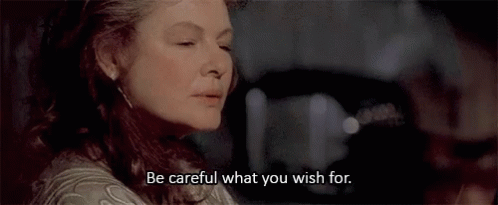
#women writers#healing#spiritual awakening#love#conjure#practical magic#the craft#witchblr#witchcraft#witch community#witches of tumblr#holy spirit#multidimensional#metamorphosis#manifesting#manifestation#be careful what you wish for#female writers#writers on tumblr#child loss#energy#healingjourney#sad thoughts#heartbreak
115 notes
·
View notes
Text
Setting Light into the past, for spells, ancestors and beyond.

Setting light is a common practice in a lot of tradition, spiritual lamps are used EVERYWHERE...so it isn't very restrictive to one tradition but as a concept that you can tweak your petitions and your intentions when you set it, I hope that people try it and report back :D
A candle burn straight down, but the light it gives off goes all the way and around. It goes forward, backward, and all around...That's how we are as human when we are "time" burns one way, but the light it gives off is all around. That's how time is, that's how our spiritual families are, that's how a lot of magical work should be, by reaching into the past. Even if I say this in a million way, don't do a candle spell to change the future, change the future by setting that light into the past.

The spiritual dead people who are connected with you by blood, by soul, and by actions are many and as many as the grains of sand in the world. To think of that it's only a backward motion is to only look at them as dead people not as people in different stages in their "life", the difference between them is the difference between an old person and a baby. Not much except time have passed. Really what you think of as ancestral predecessors are only what you see, hear, touch from your own "genetics" but if that was the only way we live, we wouldn't have spiritual heroes like the prophets, saints, righteous people, immortals, wanderer, hermits and so on.
The world as we know it is only the tip of the iceberg for the whole "world" as it is. To assume that it only extend to your family is to assume that your family is only related to you by blood and nothing more. Your Ancestors from the start till today are all here and listening carefully to each letter you read, and each word you speak for they carry their weight for them as your words are the "scale" by which they can elevate and evaluate you, it's not a one-way street or two-way street, the streets and paths are endless as the street and paths in sand tracks, YES there are easily more identifiable ones but that's not important, what's important is that you go to each path and "Call" with a sincere heart and offer a sincere word, that's what really carries the Word not if this path is more identifiable than that path. Light, and it was there.
To close off, instead of praying to someone to improve, pray to their ancestors, send your prayers of light to their "spiritual family", let it go beyond in time to the past. That's the important thing, there's a million way to skin a cat and reach Rome and this is my way of opening up a different approach to the petition and workings you do, REACH into the past and work with that. The past is just as malleable as the future, and the present is the only thing we "have" and can work with to influence all other points.
Remember, Your future and past are two columns by which you enter the mysteries of the holy temple of God and Time. Let the Light go into the past and see it illuminate you right now.
His light is like a niche in which there is a lamp, the lamp is in a crystal, the crystal is like a shining star, lit from ˹the oil of˺ a blessed olive tree, ˹located˺ neither to the east nor the west, whose oil would almost glow, even without being touched by fire. Light upon light!
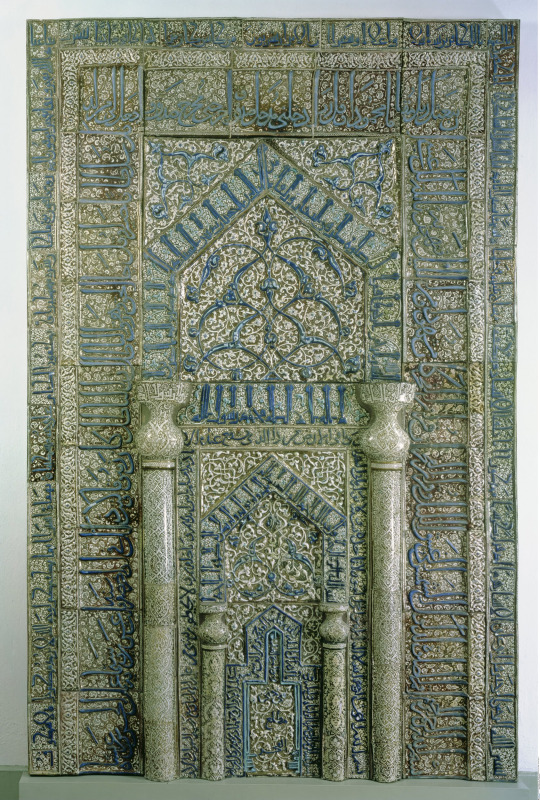
#theurgy#magic#witchblr#invocation#prayer#folk magic#folk spell#hoodoo#conjure#prayers#christianity#islam#islamic#witchcraft#magick#ritual#occult#spellwork#quran#ritual work#ritual magic#occultism#hermeticism#esotericism
87 notes
·
View notes
Text
Hoodoo, Rootwork and Conjure sources by Black Authors
Because you should only ever be learning your ancestral ways from kinfolk. Here's a compilation of some books, videos and podcast episodes I recommend reading and listening to, on customs, traditions, folk tales, songs, spirits and history. As always, use your own critical thinking and spiritual discernment when approaching these sources as with any others.
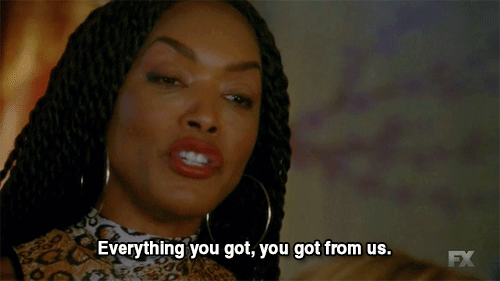
Hoodoo in America by Zora Neale Hurston (1931)
Mules and Men by Zora Neale Hurston (1936)
Tell my horse by Zora Neale Hurston (1938)
Let Nobody Turn Us Around: An African American Anthology by Manning Marable and Leith Mullings, editors (2003)
Black Magic: Religion and the African American Conjuring Tradition by Yvonne P. Chireau (2006)
African American Folk Healing by Stephanie Mitchem (2007)
Hoodoo Medicine: Gullah Herbal Remedies by Faith Mitchell (2011)
Mojo Workin': The Old African American Hoodoo System by Katrina Hazzard-Donald (2012)
Rootwork: Using the Folk Magick of Black America for Love, Money and Success by Tayannah Lee McQuillar (2012)
Talking to the Dead: Religion, Music, and Lived Memory among Gullah/Geechee Women by LeRhonda S. Manigault-Bryant (2014)
Working the Roots: Over 400 Years Of Traditional African American Healing by Michele Elizabeth Lee (2017)
Barracoon: The Story of the Last "Black Cargo" by Zora Neale Hurston (2018)
Jambalaya: The Natural Woman's Book of Personal Charms and Practical Rituals by Luisa Teish (2021)
African American Herbalism: A Practical Guide to Healing Plants and Folk Traditions by Lucretia VanDyke (2022)
youtube
youtube
youtube
youtube
These are just some suggestions but there's many many more!! This is by no means a complete list.
I recommend to avoid authors who downplay the importance of black history or straight out deny how blackness is central to hoodoo. The magic, power and ashé is in the culture and bloodline. You can't separate it from the people. I also recommend avoiding or at the very least taking with a huge grain of salt authors with ties to known appropriators and marketeers, and anyone who propagates revisionist history or rather denies historical facts and spreads harmful conspiracy theories. Sadly, that includes some black authors, particularly those who learnt from, and even praise, white appropriators undermining hoodoo and other african and african diasporic traditions. Be careful who you get your information from. Keeping things traditional means honoring real history and truth.
Let me also give you a last but very important reminder: the best teachings you'll ever get are going to come from the mouths of your own blood. Not a book or anything on the internet. They may choose to put certain people and things in your path to help you or point you in the right direction, but each lineage is different and you have to honor your own. Talk to your family members, to the Elders in your community, learn your genealogy, divine before moving forwards, talk to your dead, acknowledge your people and they'll acknowledge you and guide you to where you need to be.
May this be of service and may your ancestors and spirits bless you and yours 🕯️💀
#hoodoo#conjure#rootwork#black hoodoo authors#Youtube#hoodoo books#african american conjure#african american history#black history#black folklore#african american folklore#black magic#african american magic#witches of color#ATRs#Spotify
995 notes
·
View notes
Text
So you want to learn about Louisiana Voodoo…
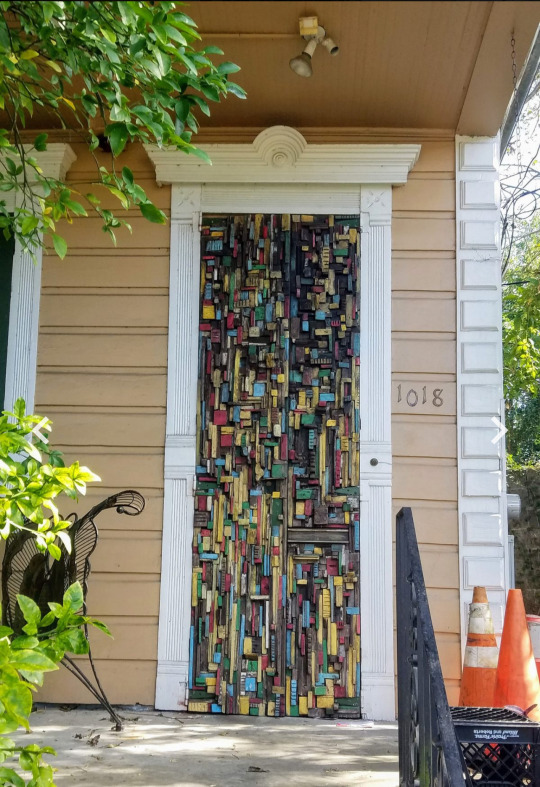
door in New Orleans by Jean-Marcel St. Jacques
For better or worse (almost always downright wrong) Louisiana Voodoo and Hoodoo are likely to come up in any depiction of the state of Louisiana. I’ve created a list of works on contemporary and historical Voodoo/Hoodoo for anyone who’d like to learn more about what this tradition is and is not (hint: it developed separately from Haitian Vodou which is its own thing) or would like to depict it in a non-stereotypical way. I’ve listed them in chronological order. Please keep a few things in mind. Almost all sources presented unfortunately have their biases. As ethnographies Hurston’s work no longer represent best practices in Anthropology and has been suspected of embellishment and sensationalism on this topic. Additionally the portrayal is of the religion as it was nearly 100 years ago- all traditions change over time. Likewise Teish is extremely valuable for providing an inside view into the practice but certain views, as on Ancient Egypt, may be offensive now. I have chosen to include the non-academic works by Alvarado and Filan for the research on historical Voodoo they did with regards to the Federal Writer’s Project that is not readily accessible, HOWEVER, this is NOT a guide to teach you to practice this closed tradition, and again some of the opinions are suspect- DO NOT use sage, which is part of Native practice and destroys local environments. I do not support every view expressed but think even when wrong these sources present something to be learned about the way we treat culture
*Start with Osbey, the shortest of the works. To compare Louisiana Voodoo with other traditions see the chapter on Haitian Vodou in Creole Religions of the Caribbean by Olmos and Paravinsi-Gebert. Additionally many songs and chants were originally in Louisiana Creole (different from the Louisiana French dialect), which is now severely endangered. You can study the language in Ti Liv Kreyol by Guillery-Chatman et. Al.
Le Petit Albert by Albertus Parvus Lucius (1706) grimoire widely circulated in France in the 18th century, brought to the colony & significantly impacted Hoodoo
Mules and Men by Zora Neale Hurston (1935)
Spirit World-Photographs & Journal: Pattern in the Expressive Folk Culture of Afro-American New Orleans by Michael P. Smith (1984)
Jambalaya: The Natural Woman's Book of Personal Charms and Practical Rituals by Luisah Teish (1985)
Eve’s Bayou (1997), film
Spiritual Merchants: Religion, Magic, and Commerce by Carolyn Morrow Long (2001)
A New Orleans Voodoo Priestess: The Legend and Reality of Marie Laveau by Carolyn Morrow Long (2006)
“Yoruba Influences on Haitian Vodou and New Orleans Voodoo” by Ina J. Fandrich (2007)
The New Orleans Voodoo Handbook by Kenaz Filan (2011)
“Why We Can’t Talk To You About Voodoo” by Brenda Marie Osbey (2011)
Mojo Workin': The Old African American Hoodoo System by Katrina Hazzard-Donald (2013)
The Tomb of Marie Laveau In St. Louis Cemetery No. 1 by Carolyn Morrow Long (2016)
Lemonade, visual album by Beyonce (2016)
How to Make Lemonade, book by Beyonce (2016)
“Work the Root: Black Feminism, Hoodoo Love Rituals, and Practices of Freedom” by Lyndsey Stewart (2017)
The Lemonade Reader edited by Kinitra D. Brooks and Kameelah L. Martin (2019)
The Magic of Marie Laveau by Denise Alvarado (2020)
In Our Mother’s Gardens (2021), documentary on Netflix, around 1 hour mark traditional offering to the ancestors by Dr. Zauditu-Selassie
Voodoo and Power: The Politics of Religion in New Orleans 1880-1940 by Kodi A. Roberts (2023)
The Marie Laveau Grimoire by Denise Alvarado (2024)
Voodoo: An African American Religion by Jeffrey E. Anderson (2024)
#I’ll continue to update as I find more sources#Please be respectful of other people’s religion#Louisiana Voodoo#Louisiana Hoodoo#In the case of authors behind a paywall or whom you do not wish to support I highly recommend your local library#I do not support every view but think even when wrong they present something to be learned about the way we treat culture#Voodoo#Hoodoo#conjure#rootwork#Books
30 notes
·
View notes
Text
In the shadows of a brutal era in American history, where oppression and cruelty reigned, a powerful form of resistance took root: the Praise House. For enslaved black individuals in the Antebellum South, the Praise House stood as a sacred sanctuary, a place where they could defy the oppressive Christian views imposed upon them by their slave masters.

In a world where the power structures dictated every aspect of an enslaved person's existence, the Praise House emerged as a symbol of defiance and strength. It became a space where faith, culture, and the indomitable spirit of the African diaspora could thrive despite the dehumanizing conditions of slavery.
Meetings in the Praise House were not confined to the familiar rhythms of Sunday mornings. Instead, these gatherings typically took place on weeknights, a subtle act of rebellion in itself. The slave masters preferred their human property to attend white-dominated churches, where carefully curated sermons served as a reinforcement of the slave system, often using scripture as a tool of control.
Within the walls of the Praise House, the enslaved black community found solace in the absence of opulent Christian symbols and trappings. There, empty space was favored over altars, kneelers, pulpits, and even chairs and pews. This minimalism provided the space needed for the powerful and spiritually charged "ring shouts," an integral part of the all-night sessions of prayer and song. These gatherings were more than just expressions of faith; they were acts of resistance, defiance, and a testament to the resilience of the human spirit.

Even in the most degrading conditions, religious life and practice served as a source of strength and unity for the slave community. The Praise House became the focal point of their lives on the plantations, a place where their identity was preserved and their spirits were nurtured.
As time passed and the shackles of slavery fell away, the significance of Praise Houses remained unwavering. They continued to serve as the heart of the African community, a testament to the enduring strength of culture and faith.
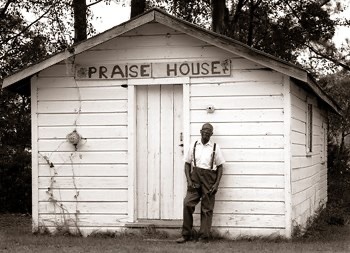
Today, we at My Mind and Me Inc and the Temple of Living Word a 501c3 non profit based in Atlanta are on a mission to rekindle the traditions of the past and return to our Southern hoodoo roots. Our goal is to open our own Praise House in Atlanta, where hoodoos, practitioners of African Traditional Religions (ATRs), and individuals of all backgrounds can practice openly, without judgment. In this sacred space, we will offer open altars, prayer sessions, spaces for practitioners to teach, and, of course, the continuation of the cherished tradition of ring shouts.
To make this vision a reality, we need your support. Be a part of a bigger picture, a story of resistance and resilience. Donate today and help us build a Praise House that stands as a testament to the enduring strength of culture, faith, and unity. Together, we can create a space where souls find solace, healing, and renewal.
Join us on this sacred journey, and be a part of history.
Please SHARE! SHARE! SHARE!
Atlanta family TAP IN
@mymindandmeinc @realconjuhwoeman
#hoodoo#medium#ancestor veneration#witch#rootwork#black women#conjure#prophet#tutnese#luxury#gofundme#nonprofit#healing#donate
103 notes
·
View notes
Text
Top 5 Must-Knows about Ancestor High John:
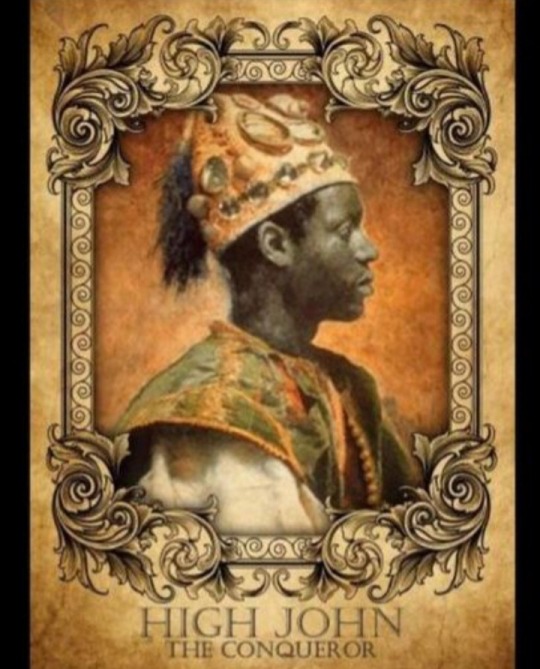
1. Prince High John is multifaceted as both a Hoodoo Saint & Collective of Hoodoo Spirits.
2. Prince High John is a legendary figure of Hoodoo Folklore & an Elevated Ancestor who once walked this land.
3. Prince High John blessed us with a piece of his essence left behind in the infamous High John Root; a staple of Hoodoo Culture.
4. The rhizomes of both Ipomoea purga aka Jalap (native to Mexico) & Ipomoea pandurata are used to invoke the power & spirit of High John; the former is believed to be THE High John Root.
5. Prince High John is to be fed cornbread, greens, yams, whiskey (or other dark liquors), tobacco smoke (via cigars), monry, & adorned with the color purple.
#hoodoo#hoodoos#atr#atrs#the hoodoo calendar#ancestor veneration#rootwork#conjure#Hudu#High John the Conqueror#High John#Hoodoo Saints#Hoodoo Folklore#Hoodoo Culture
99 notes
·
View notes
Text
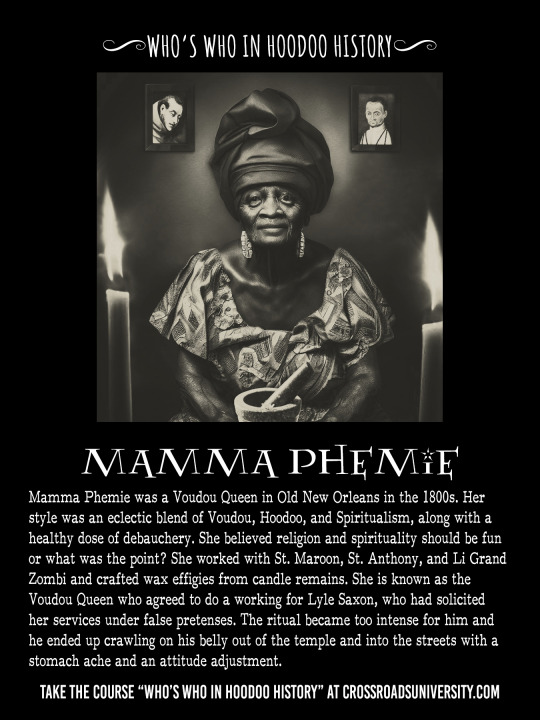
Who's Who in Hoodoo History: Mamma Phemie
Lyle Saxon said he’d always wanted to attend a Voudou ceremony and witness firsthand the sacred rites, but he’d never had the chance. Then, one day—under false pretenses—he got the opportunity.
Saxon had known an enslaved Congo man named Robert for years because Robert had worked for Saxon’s closest friends. In a happenchance meeting, Saxon told Robert some cockamamie story about being heartbroken because a rival stole his girlfriend. He said he wanted revenge on his enemy but was afraid to do anything himself. Of course, Robert took the bait and told Saxon he would take him to a Voudou woman to get it taken care of. So, that’s what they did. Robert took Saxon to see Mamma Phemie.
Mamma Phemie took Saxon through a variety of rituals that involved uncrossing. She had him unbuttoning, unclothing, and basically stripping down to nothing but a loose white robe wrapped around his body. She then prepared a parterre-type altar on the floor, characteristic of 19th-century hoodoo and Voudou. She recited a litany of Catholic prayers, and she experienced possession. Her style was an eclectic blend of Voudou, hoodoo, and spiritualism, along with a healthy dose of debauchery, if Saxon’s description is accurate.
To fix Saxon’s problem, Mamma Phemie said she would petition St. Maroon and Li Grand Zombi (the serpent god). To that end, she fashioned a poppet to represent Saxon’s rival out of black candle wax. After convincing him to cut himself so that she could have a blood offering to smear on the wax, she placed the effigy near the fire where the gumbo cooked in the center of the room. As the wax melted, Mamma Phemie began praying to Jesus, Mary, and Joseph. Then she recited the Act of Contrition. Suddenly, she stopped and yelled out: “Maroon!”
Her congregation followed suit, repeating “Maroon!” over and over again. Finally, one of her assistants brought to the parterre a statue of St. Anthony. As he set it down on the altar cloth next to Mamma Phemie, he said, “Done set de table, St. Maroon . . . now what yo’ goin’ to do?” Immediately the congregation broke out into the chant:
W’at yo’ goin’ to do? Oh, w’at yo’ goin’ to do?
Oh, Maroon, oh St. Maroon,
W’at yo’ goin’ to do?
According to Saxon, “there was no response from the sad-faced saint” (Saxon 1928, 317). Mamma Phemie’s attempt to summon the spirit intensified. She rose to her feet, assisted by a young girl whom Saxon dubbed “the mulatto girl,” and exclaimed: “Yo’ answer me, Maroon! What yo’ goin’ to do?”
Mamma Phemie stomped her foot and spat wine on the statue. In traditional New Orleans Voudou, this is more accurately described as spraying the image with wine to wake up the spirit. This is done by taking a sip of liquid—usually alcohol of some sort—and spraying the liquid out in a fine mist with the mouth. As Saxon didn’t know what he was looking at and wrote from an outsider’s perspective, the behavior sounds rude and vile. But it is not when explained in the appropriate cultural and religious context. This is done to bless objects, people, and spaces to prepare them for ritual activity.
Saxon observed Mamma Phemie go into a frenzy and ultimately into what he thought was an epileptic fit. Again, he was watching as an outsider who came under false pretenses with many preconceived ideas about the nature of Voudou, and he got it wrong. Of course, I was not there as a doctor who could determine whether she actually experienced an epileptic fit. I can say that if you have ever witnessed possession in the context of Voudou, it can look like an epileptic fit to the untrained, inexperienced eye. When the spirits are called down, those present at the ceremony may offer their bodies as “horses” for the spirits to “ride.” Mamma Phemie had been ridden by St. Maroon, evidenced by the exclamations of her congregants, “She done possess! She got ’er way! St. Maroon done answer ’er!” Her assistant added, “De sperrit done come strong on her!” (Saxon 1928, 318).
After Mamma Phemie came to, bowls of gumbo were passed out to congregants. Saxon was offered gumbo but didn’t want to eat it because he saw what he thought was a snake as one of the ingredients. Despite his initial revulsion, he forced himself to take a sip and immediately became sick to his stomach. He continued to watch the ceremony as more possessions began to take place. His anxiety mounted. He clearly did not understand what was going on. He described what he saw in sexual terms, noting how participants were scantily dressed, and “Mamma Phemie was shaking her breasts in rhythm to the drum” (Saxon 1928, 318).
Suddenly, she stood in the middle of the room and shouted: “Zombi!” Saxon then described men and women dropping to the floor writhing and moaning. This is an accurate description of people falling to the floor possessed by Li Grand Zombi. Li Grand Zombi is the primary serpent deity of New Orleans Voudou. The term can refer to the family of serpents in the New Orleans Voudou pantheon, as well. When folks are possessed by Zombi, they will writhe on the floor like a snake and hiss.
After a time, Saxon was given a gris gris designed to remedy his fake problem. “They handed me things that had been prepared for me,” Saxon reported. “A small bag containing ashes, hairs from a white horse’s tail, salt and pepper, and some crushed dried leaves; a box containing pecans which had been drilled with holes and in which feathers had been inserted; a bundle of feathers, wound around with dried grass” (Saxon 1928, 318).
Saxon was told to take the items he had been given and throw them one at a time in the path of his enemy. The feather bundle was to be put inside his rival’s pillow, while the pecans should be placed at his front door. When he next saw his enemy, he was told to throw some salt behind him as he left, which is believed to keep an unwanted person from returning. He was given an orange from St. Maroon’s altar to eat to provide him with strength. “It could not fail me now, for St. Maroon had blessed it. Had I not seen this miracle?” (Saxon 1928, 319).
Through this experience—one that he had the privilege of attending though doing so through deceptive means—Saxon maintained a special level of arrogance. His description of the ceremony moved from sexual to animalistic. He described attempted sexual assault, men biting women, and women being hurled halfway across the room. He said people were crashing against him in the dark, and wine was poured on him.
It wasn’t long before he ran like a little bitch out of the ceremony, sick to his stomach and scared to death. As he crawled on the floor toward the door, he reached desperately for his clothes and was spotted. Robert asked him if he was okay. All Saxon could do was a motion to let him pass.
“Out! I’m going out! Get out of the way!” he exclaimed.
One of the attendants standing guard outside took him by the arm and escorted him off the property, down an alley, and finally through a gate.
Saxon was so sick all he could do was lean against a lamppost. “Finally, the spasm of nausea passed, and I stagger along the dim streets, back toward a sane world which tells me that Voodoo no longer exists—if it ever existed!” (Saxon 1928, 322).
*Excerpted from Witch Queens, Voodoo Spirits, and Hoodoo Saints: A Guide to Magickal New Orleans
Explore the course, Who's Who in Hoodoo History to learn the stories of the OGs of Hoodoo. https://www.crossroadsuniversity.com/courses/who-s-who-in-hoodoo-history
235 notes
·
View notes
Text
10 women across African mythologies 💋
102 notes
·
View notes